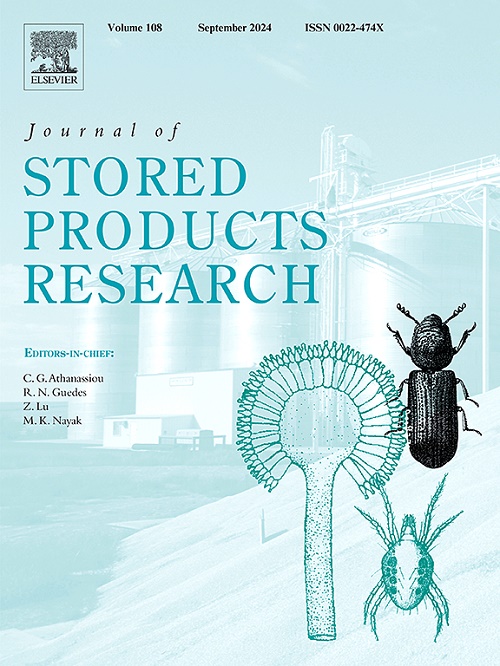Assessing insecticide residues in stored maize in Southern and Central Benin
IF 2.7
2区 农林科学
Q1 ENTOMOLOGY
引用次数: 0
Abstract
In Benin, protection of maize against storage insect pests remains a major challenge and motivates maize growers to rely on synthetic chemicals. The overuse/misuse of such compounds can lead to high residue levels and potential health risks. This current study was designed to assess insecticide residues in stored maize in Southern and Central Benin. Thirty-five (35) samples of shelled, husked and dehusked maize were collected in both areas especially in seven major maize production municipalities namely Adjohoun, Aplahoue Djidja Kétou, Lokossa, Ouesse and Toffo. Samples were taken from different types of storage structures in five villages (one sample per village) in each municipality. Both villages and growers were selected randomly. Chemical residues were extracted using the QuEChERS method with 4 replicates while analysis was performed using High Performance Liquid Chromatography (HPLC) coupled with an Ultra-Violet spectrophotometer technique for the four commonly applied chemicals on stored maize in the study area. Residues of Pirimiphos-methyl, Aluminium phosphide and Permethrin were found in 80–100, 40–100, and 0–100% of the samples collected, respectively, but none contained Lambda-Cyhalothrin. In total, 97% of the samples contained at least one of the pesticides tested, and 94% contained at least one of the pesticides tested at a concentration above the European Union international standard (Maximum residual limits) (MRL). Of these, 77%, 91% and 14% of the samples contained residues above the MRL for aluminum phosphide, pirimiphos-methyl and permethrin, respectively. Data were discussed with regard to potential human health concerns.
求助全文
约1分钟内获得全文
求助全文
来源期刊
CiteScore
5.70
自引率
18.50%
发文量
112
审稿时长
45 days
期刊介绍:
The Journal of Stored Products Research provides an international medium for the publication of both reviews and original results from laboratory and field studies on the preservation and safety of stored products, notably food stocks, covering storage-related problems from the producer through the supply chain to the consumer. Stored products are characterised by having relatively low moisture content and include raw and semi-processed foods, animal feedstuffs, and a range of other durable items, including materials such as clothing or museum artefacts.

 求助内容:
求助内容: 应助结果提醒方式:
应助结果提醒方式:


